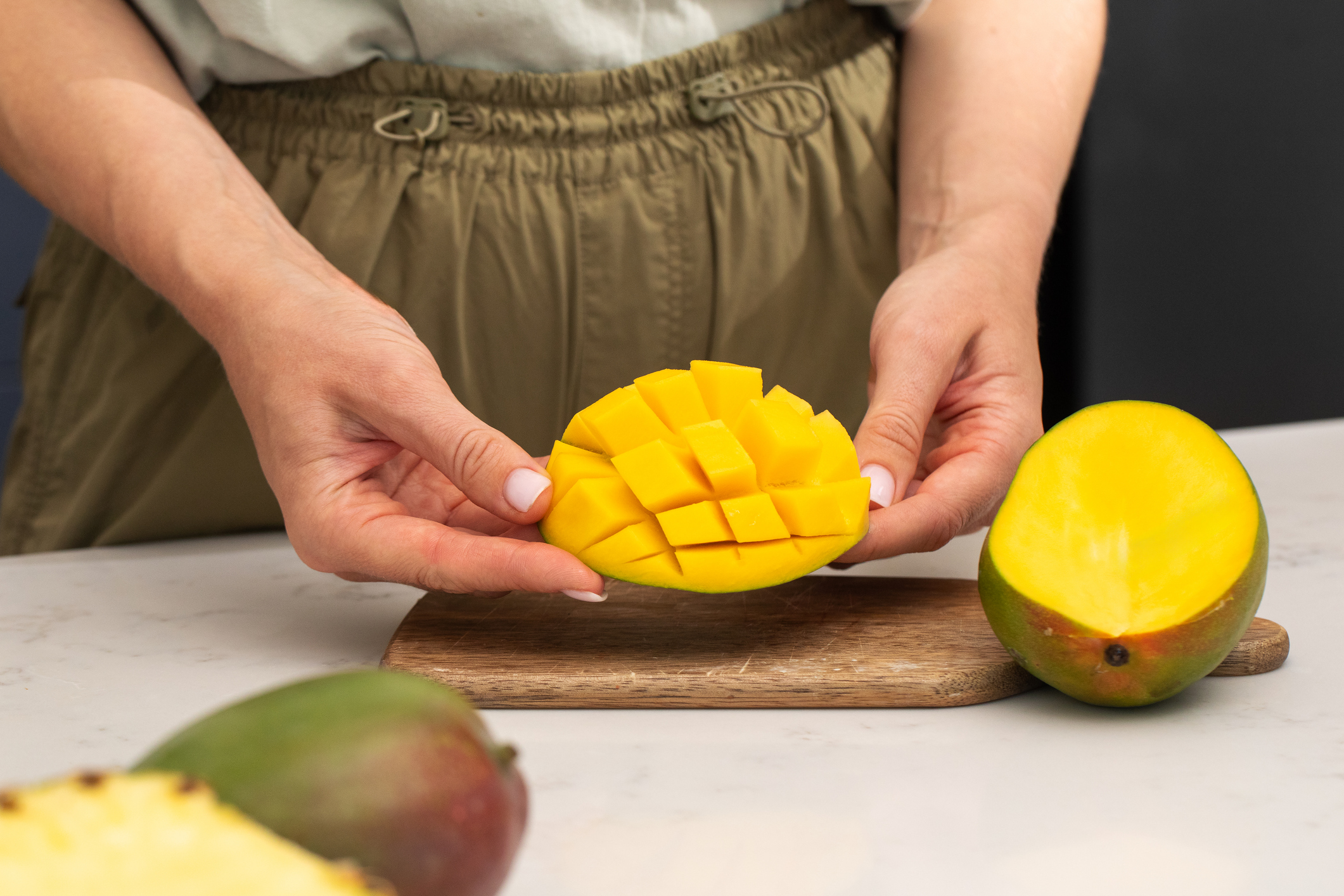Featured: Cynthia Sass, MPH, MA, RD, CSSD
As a nutritionist, my goal is to help people embrace healthy meals they look forward to and enjoy eating. Incorporating mangos into your dishes is a great way to do just that. In addition to their unique tropical flavor and versatile texture, mangos are chock full of nutrition, providing 20 different vitamins and minerals. One ¾ cup serving of mango provides just 70 calories, but packs 50% of the Daily Value for vitamin C, 8% for vitamin A, 15% for folate, 7% for dietary fiber, and 8% for vitamin B6.
Mango’s vitamin C content plays an important role in immune function and helps keep gums and teeth healthy. The vitamin A content in mangos is also important for immune function. In addition it’s critical for vision, and helps maintain healthy skin. The fiber in mangos helps you feel full faster, and therefore may help support weight management. Dietary fiber also aids digestion, helps control constipation, and slows the absorption of sugar into the bloodstream.
Fortunately, mangos work well in a variety of recipes, so it’s easy to take advantage of their benefits. When purchasing mangos don’t judge ripeness by color. Instead, gently give them a squeeze. A ripe mango will give slightly, and a firm mango will continue to ripen at room temperature. You can also speed the ripening process by storing firm mangos in a paper bag on your kitchen countertop. Stash ready to eat mangos in the fridge to slow ripening.
Throughout the winter mangos can be enjoyed hot or cold. Chilled mangos can be served sliced, garnished with fresh lime juice and sea salt, as an appetizer, snack, or dessert. Whip chilled ripe mango into smoothies, and add to garden salads and slaw. There are also numerous ways to enjoy mangos in dishes that will warm you up.
Baked sliced mango, drizzled with a combination of virgin coconut oil, maple syrup, and ground cinnamon, until the fruit is tender and bubbly. Add this combo to your morning oatmeal, or serve over broiled fish or chicken breast. Add chopped mango to stir frys, or combine with pico de gallo and avocado to serve over tacos or whole grain bowls. Alternate mango cubes with veggies and shrimp on skewers for kabobs, or include them as a topping on turkey or salmon burgers or Panini sandwiches.
The flavor of mangos has been described as a cross between a pineapple and orange, although not as acidic, with a hint of peach. That matchless taste, in addition to their hearty texture, makes them a match for both sweet and savory dishes, and nearly every type of cuisine.
Get creative. Enjoy the flare of color and zest mangos add to your meals. And savor the knowledge that you’re adding health-protecting nutrients with each delicious bite!
REFERENCE:
B. Burton-Freeman, A. Sandhu, I. Edirisinghe. Mangos and their bioactive components: adding variety to the fruit plate for health. Food & Function. May 2017.
Learn more about Cynthia Sass here.

